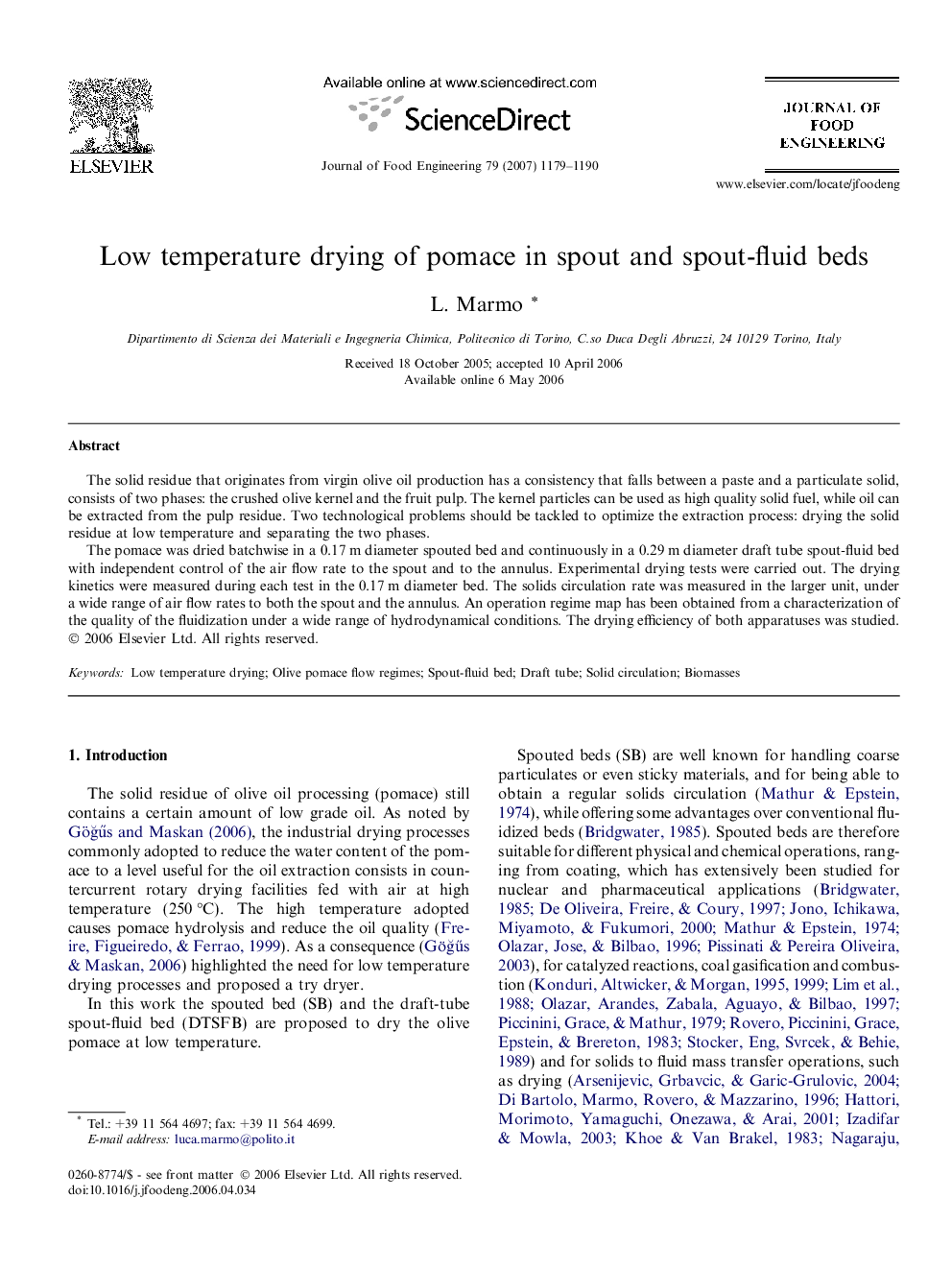| Article ID | Journal | Published Year | Pages | File Type |
|---|---|---|---|---|
| 226071 | Journal of Food Engineering | 2007 | 12 Pages |
The solid residue that originates from virgin olive oil production has a consistency that falls between a paste and a particulate solid, consists of two phases: the crushed olive kernel and the fruit pulp. The kernel particles can be used as high quality solid fuel, while oil can be extracted from the pulp residue. Two technological problems should be tackled to optimize the extraction process: drying the solid residue at low temperature and separating the two phases.The pomace was dried batchwise in a 0.17 m diameter spouted bed and continuously in a 0.29 m diameter draft tube spout-fluid bed with independent control of the air flow rate to the spout and to the annulus. Experimental drying tests were carried out. The drying kinetics were measured during each test in the 0.17 m diameter bed. The solids circulation rate was measured in the larger unit, under a wide range of air flow rates to both the spout and the annulus. An operation regime map has been obtained from a characterization of the quality of the fluidization under a wide range of hydrodynamical conditions. The drying efficiency of both apparatuses was studied.
